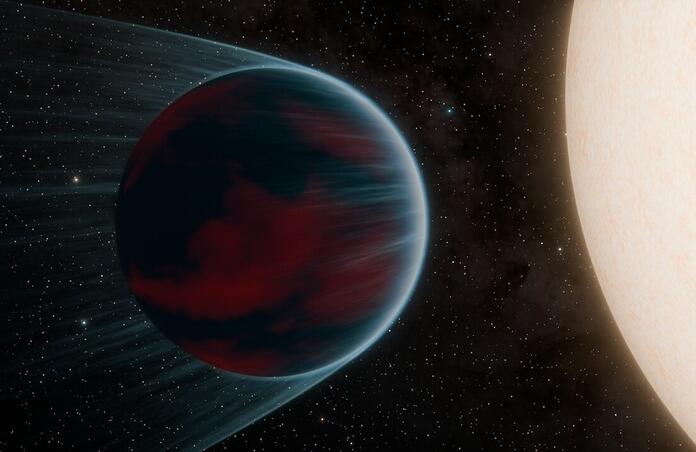hot Neptune in extreme orbit discovered

TOI-3261 b, a Neptune-sized exoplanet has been discovered with an extremely tight orbit around its host star. The new finding could be essential to better understanding how such planets form, being one of four found so far.
The extreme exoplanet was discovered through the Transiting Exoplanet Survey Satellite, with further ground-based observations made with telescopes in Australia, Chile and South Africa. These measurements placed it in the hot Neptune desert, which is a scarcity of planets similar in size to Neptune but with very close orbits. TOI-3261 b takes just 21 hours to orbit its star, making it an ultra-short period hot Neptune with precise mass measurements, a group which only hosts 3 other members.
TOI-3261 b is an ideal target for testing new planet formation models. Such planets are rare since it is difficult to retain a thick gaseous atmosphere at such close distances to the star. The star also exerts a vast gravitational force on the planet, stripping layers of gas around it and blowing them away. This could mean that hot Neptunes were originally much larger, Jupiter-sized planets that have undergone subsequent mass loss.
The team modelled different initial conditions and evolution scenarios, ultimately determining that the star-planet system is 6.5 billion years old and the planet began as a much larger gas giant. It then likely experienced mass loss through two different mechanisms: photoevaporation and tidal stripping.
Photoevaporation is where energy from the star causes gas particles to dissipate, whereas tidal stripping results from the stellar gravitational force removing layers of gas from the planet. The hot Neptune may have also formed further away from the star where these effects are less intense, so it was able to retain an atmosphere.
One of the most intriguing features to be studied is the remaining atmosphere of TOI-3261 b. Further atmospheric analysis could shed light on the formation history of planets in this parameter space. The planet is twice as dense as Neptune, suggesting that the lighter parts of its atmosphere have been lost over time, leaving behind the heavier constituents. Therefore, the planet once hosted a variety of elements in its atmosphere, however, currently it is difficult to determine what this consisted of.
This question may be answered by IR observations from JWST, which could provide the chemical fingerprints of various atmospheric molecules. From this, astronomers can better understand the exoplanets past and subsequent evolution, as well as the physical processes which drive hot, giant planets.
--
Cover image: NASA/JPL-Caltech/K. Miller (Caltech/IPAC
Journal source: Emma Nabbie et al, Surviving in the Hot-Neptune Desert: The Discovery of the Ultrahot Neptune TOI-3261b, The Astronomical Journal (2024). DOI: 10.3847/1538-3881/ad60be
